Spotting one of the world’s deadliest snakes might make your heart race, but don’t worry, from a safe distance, they’re fascinating creatures with unique methods for hunting their prey. These slithering assassins are designed by nature to be efficient and lethal. Their venomous bites have evolved into specialized weapons, each with its own devastating effects.
1. Inland Taipan: Master of Venom
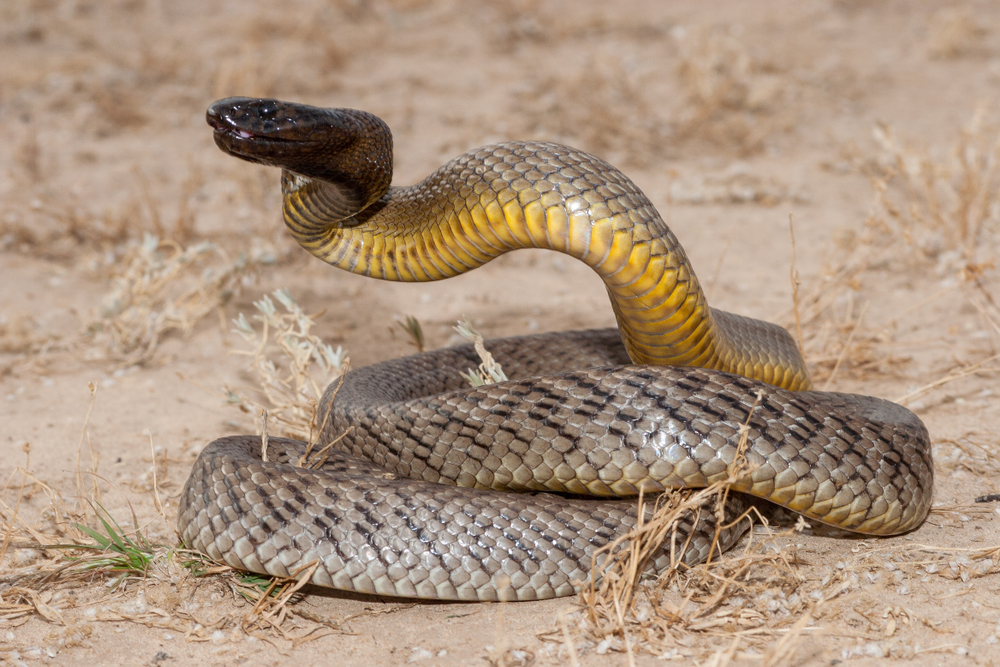
The Inland Taipan, often called the “fierce snake,” holds the crown for the most toxic venom. Found in Australia, this snake’s venom is a cocktail of neurotoxins and hemotoxins, designed to paralyze and cause internal bleeding in its prey. What’s remarkable is its efficiency—it can kill a human in under an hour. But fear not, it’s reclusive and rarely seen by humans. The Inland Taipan’s venom works by quickly immobilizing prey, which are usually small mammals, allowing the snake to dine without a struggle or chase.
2. King Cobra: The Hooded Monarch
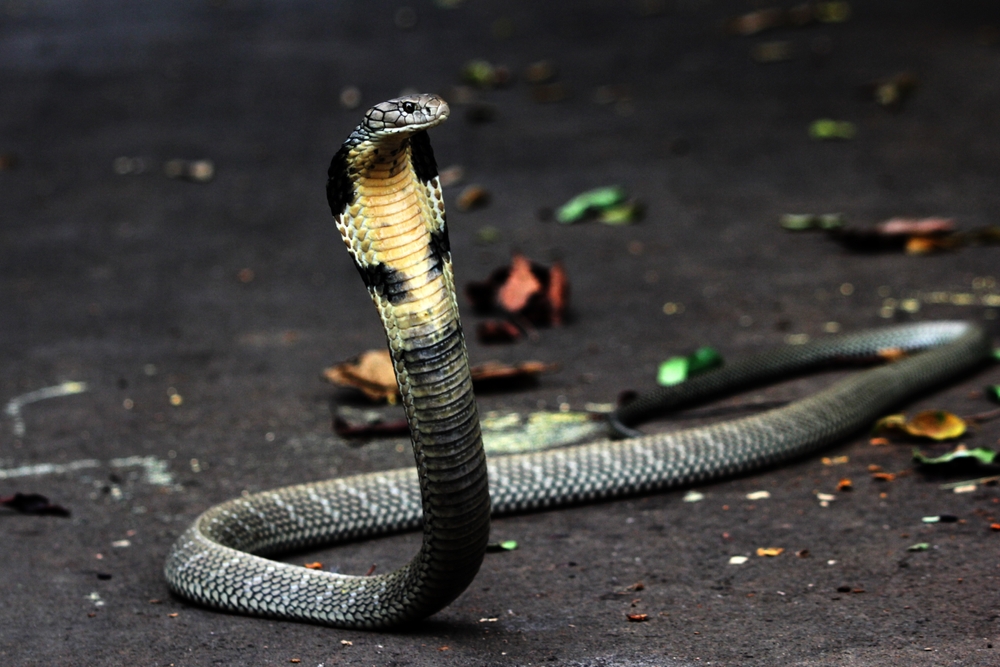
The King Cobra, revered and feared, is the longest venomous snake in the world. Its venom isn’t the most potent, but its capacity to inject large amounts is what makes it deadly. When threatened, it rears up and flattens its neck into a hood, a classic warning sign. Its venom is primarily neurotoxic, leading to paralysis. It preys mainly on other snakes, using its intelligence and keen sense of smell to track them. The King Cobra’s regal appearance is matched by its extraordinary hunting skills.
3. Black Mamba: Speed and Precision
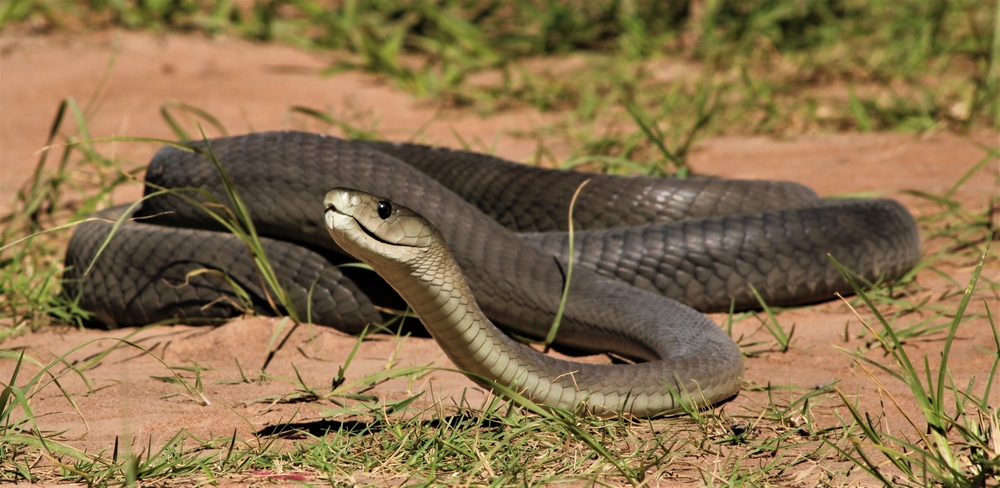
Known for its speed and agility, the Black Mamba can slither at remarkable speeds of up to 12 miles per hour. Native to parts of sub-Saharan Africa, this snake’s venom is a potent mix of neurotoxins. A single bite can be lethal, causing respiratory failure in its prey. It delivers multiple bites in rapid succession, ensuring its target is quickly subdued. The Black Mamba is not just fast on land but also when striking, making it one of the most formidable predators in the snake kingdom.
4. Russell’s Viper: The Silent Stalker
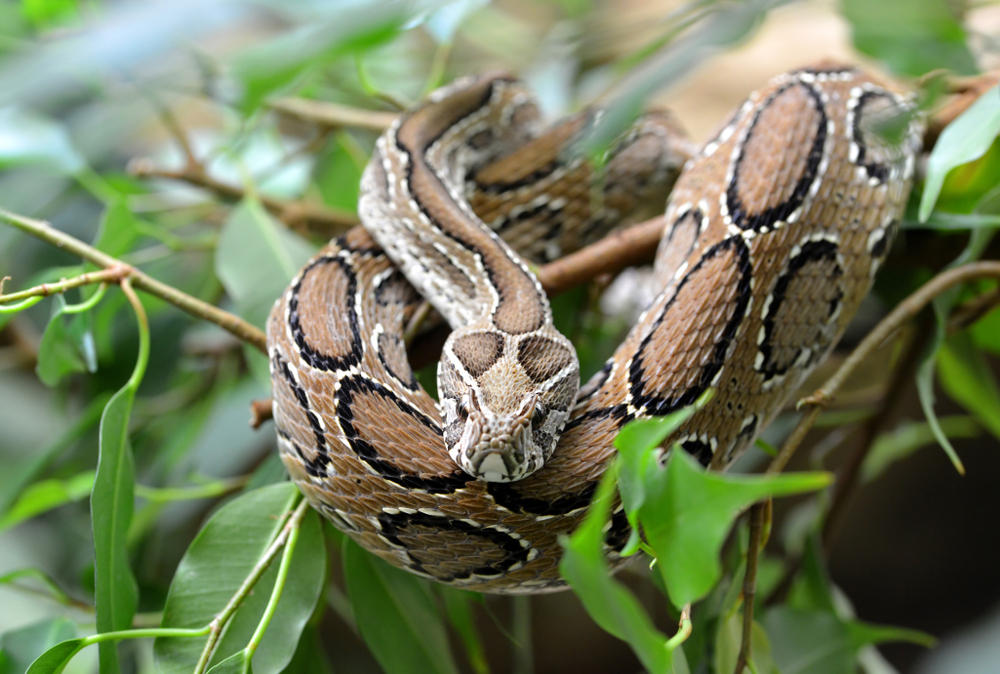
Russell’s Viper is responsible for numerous snakebite incidents across its range in Asia. This snake prefers to ambush its prey, relying on its camouflaged scales to blend into its surroundings. Its venom is a mix of hemotoxins that cause blood coagulation and organ damage. Victims experience intense pain, swelling, and bleeding. Despite its deadly nature, Russell’s Viper is not aggressive unless threatened. Its ability to stay motionless and wait for prey to come close speaks to its patience and cunning as a hunter.
5. Boomslang: The Leaf Dweller
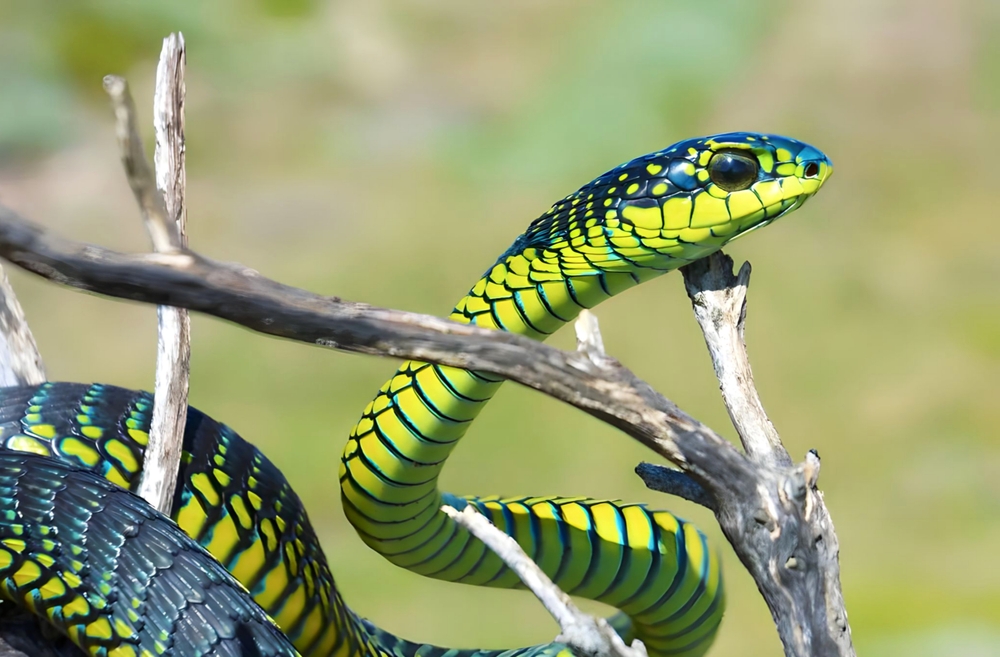
With its bright green scales, the Boomslang is a master of disguise in tree foliage. Native to sub-Saharan Africa, this snake uses its arboreal agility to hunt birds and chameleons. Its venom is hemotoxic, causing internal bleeding. Uniquely, the Boomslang has large fangs located at the back of its jaw, which it uses to chew venom into its prey. This snake’s strategy involves a stealthy approach, relying on its exceptional climbing skills and color camouflage to catch its prey off guard.
6. Saw-Scaled Viper: The Small Terror
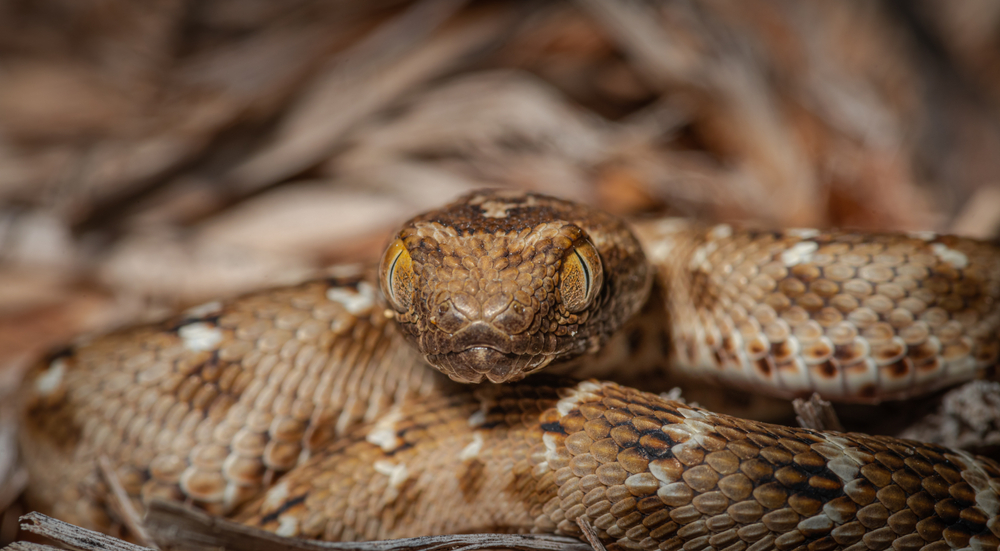
Don’t let its small size fool you; the Saw-Scaled Viper is notorious in its native habitats across Africa and Asia. Its venom contains cytotoxins that damage tissues and cause bleeding. When threatened, it produces a distinctive rasping sound by rubbing its scales together, a warning before it strikes. It’s responsible for more human fatalities than any other snake due to its abundance and aggressive nature. This viper’s method is straightforward: bite quickly and allow its potent venom to incapacitate its prey.
7. Coastal Taipan: The Quick Striker
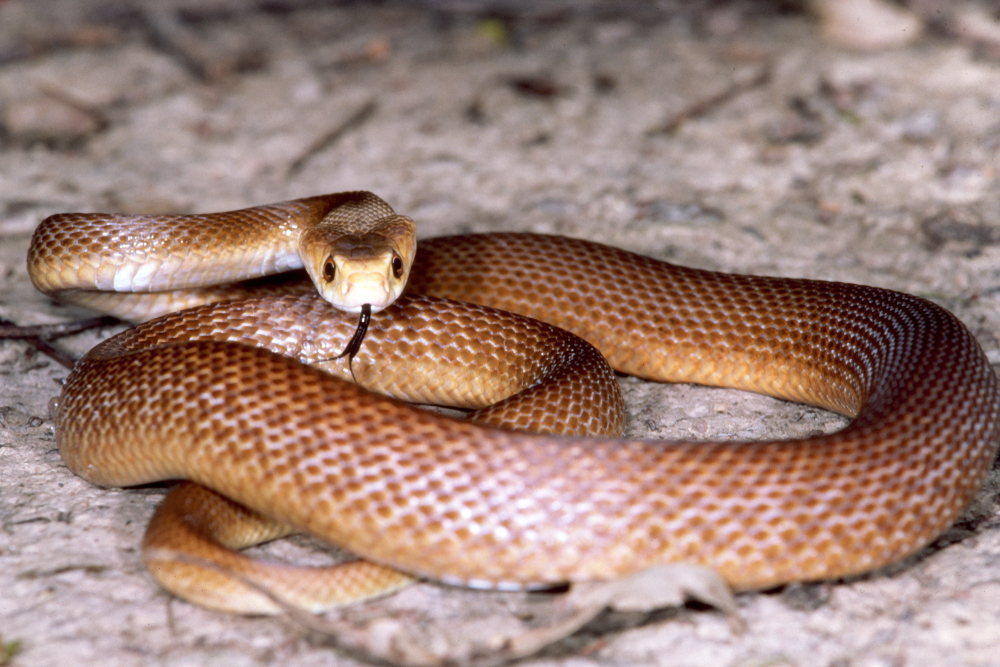
The Coastal Taipan, found in northern Australia and New Guinea, is known for its rapid strikes and potent venom. Neurotoxins in its venom can cause paralysis and death if untreated. It primarily preys on rodents, using its speed to catch them by surprise. This snake is highly agile, capable of delivering multiple strikes in a matter of seconds. Its strategy involves stalking its prey silently before unleashing a swift, fatal attack, showcasing both its deadly venom and its skills as a hunter.
8. Banded Krait: The Nighttime Hunter
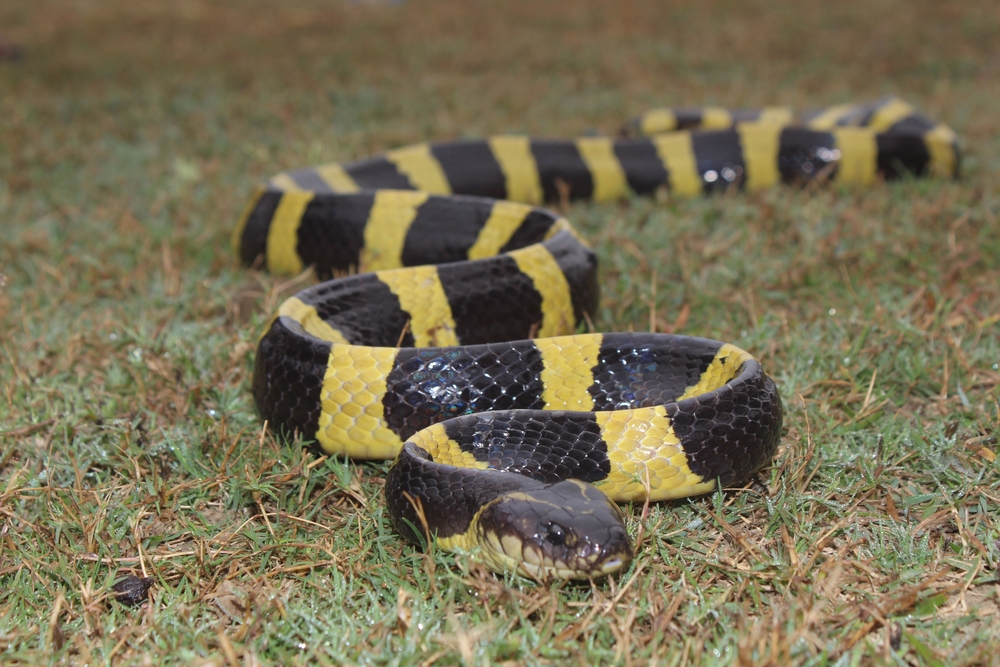
The Banded Krait is a nocturnal predator found in South and Southeast Asia. Its venom contains neurotoxins that paralyze its prey. This snake is often seen as docile during the day but becomes active and formidable under the cover of darkness. It preys primarily on other snakes and reptiles, using its keen sense of smell to track them. The Banded Krait’s distinctive black and yellow bands serve as a warning to potential threats while it silently stalks its prey through night-time habitats.
9. Gaboon Viper: The Patient Predator

The Gaboon Viper, native to African rainforests, is famous for its striking appearance and massive fangs, the longest of any snake. Its venom is a mix of hemotoxins that cause swelling and tissue damage. This snake relies on its camouflage to remain hidden on the forest floor, waiting patiently for prey to wander by. It’s an ambush predator, striking with incredible speed and accuracy. Its ability to blend into leaf litter and wait for the perfect moment makes it a master of stealth hunting.
10. Eastern Brown Snake: The Lightning Bolt
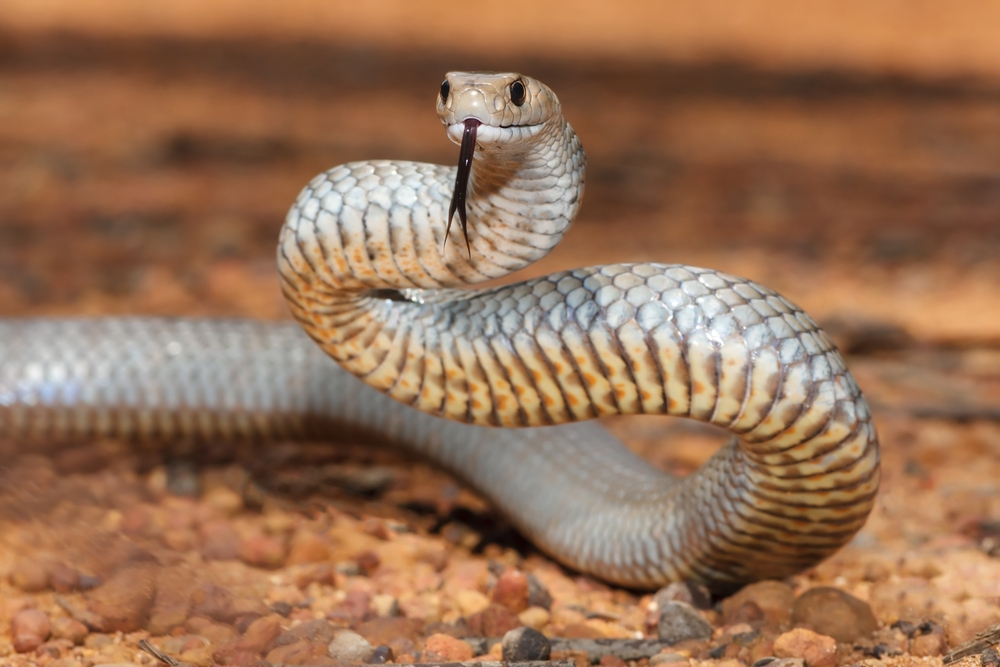
Found in Australia, the Eastern Brown Snake is one of the fastest snakes, capable of delivering a swift and deadly bite. Its venom is a potent mix of neurotoxins and coagulants, causing paralysis and severe bleeding. Despite its aggressive reputation, it prefers to avoid confrontation, striking only when cornered. This snake’s main diet includes rodents, which it hunts using its speed and precision. The Eastern Brown Snake’s ability to quickly subdue its prey with a single bite underscores its efficiency as a lethal predator.
11. Fer-de-Lance: The Jungle Assassin
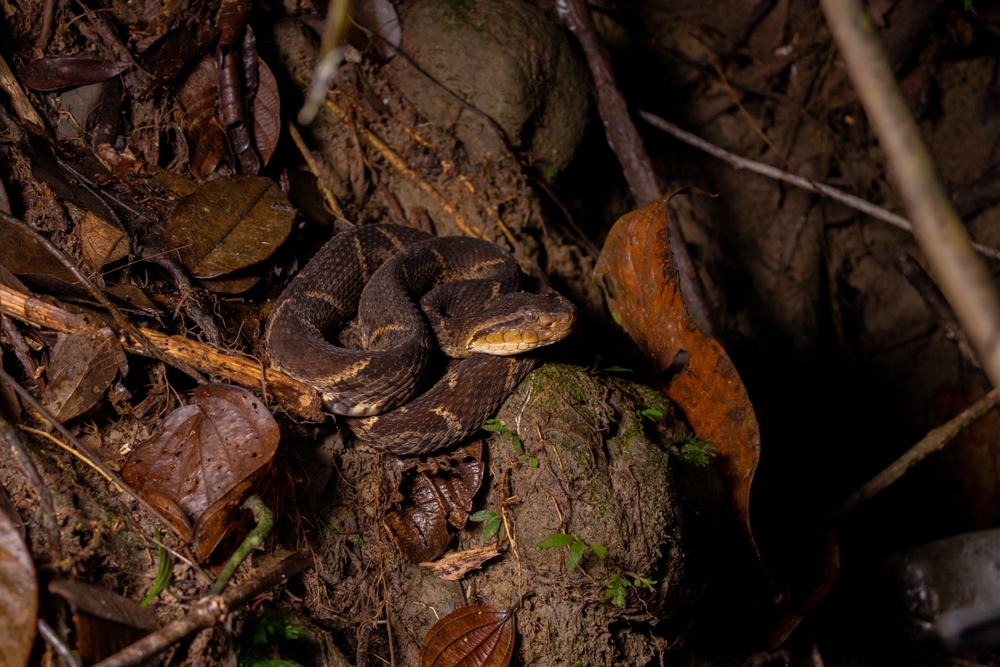
The Fer-de-Lance, or Bothrops asper, is a highly venomous pit viper found in Central and South American jungles. Its venom contains hemotoxins that cause severe tissue damage and bleeding. This snake is known for its aggressive nature and tendency to stand its ground when threatened. It uses heat-sensing pits to locate warm-blooded prey in the dense underbrush. The Fer-de-Lance relies on its stealth and power to strike unsuspecting rodents and birds, making it a formidable force in its tropical habitat.
12. Mojave Rattlesnake: The Desert Duelist
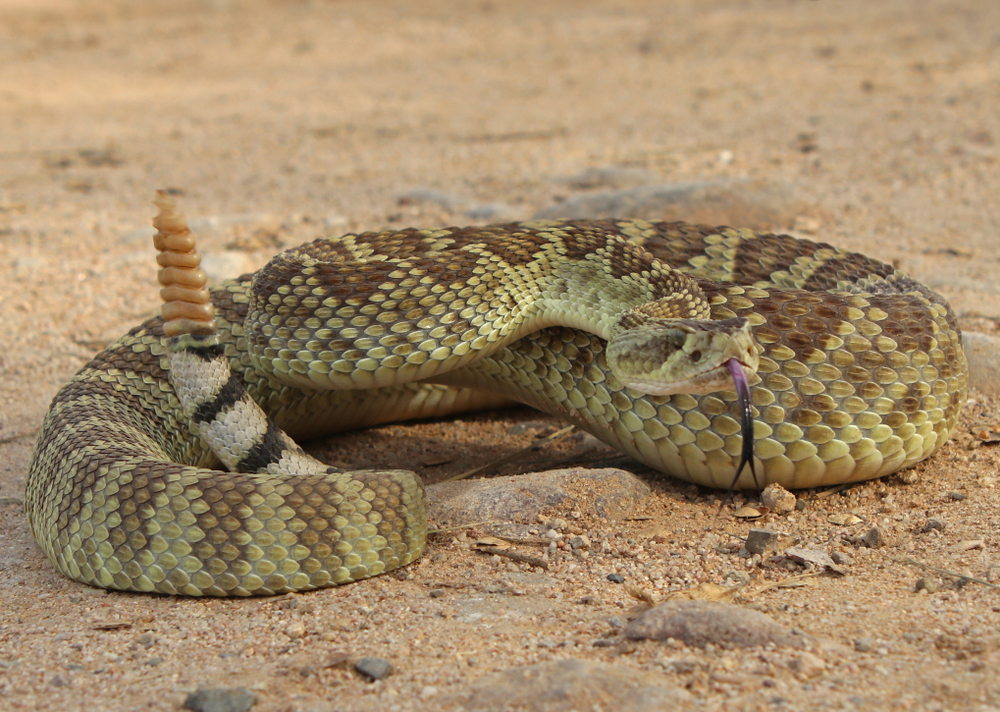
The Mojave Rattlesnake, native to the deserts of the southwestern United States and Mexico, has a neurotoxic venom that can cause respiratory failure. This snake is known for its distinctive rattle, a warning sign before it strikes. It primarily preys on small mammals and birds, lying in wait for the perfect moment to attack. The Mojave Rattlesnake’s ability to adapt to arid environments and its lethal bite make it a feared predator, using both its venom and natural camouflage to great advantage.
13. Philippine Cobra: The Spitting Venom
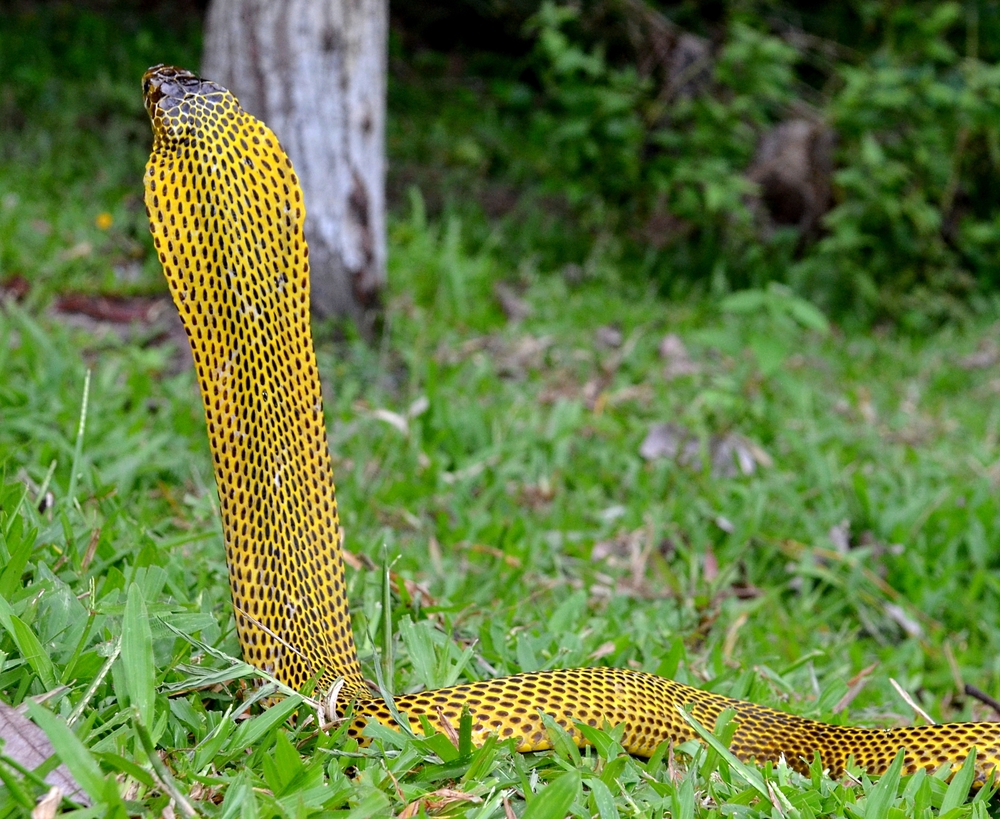
The Philippine Cobra is unique for its ability to spit venom up to three meters away. This snake’s venom contains neurotoxins that can cause paralysis and respiratory failure. It targets the eyes of its perceived threats, causing temporary blindness. Found in the Philippines, it hunts small mammals and amphibians. Its spitting ability is both a defensive mechanism and a predatory tool, showcasing its adaptability in various situations. The Philippine Cobra’s intelligence and precision make it a fascinating yet dangerous reptile.
14. Eastern Coral Snake: The Colorful Enigma
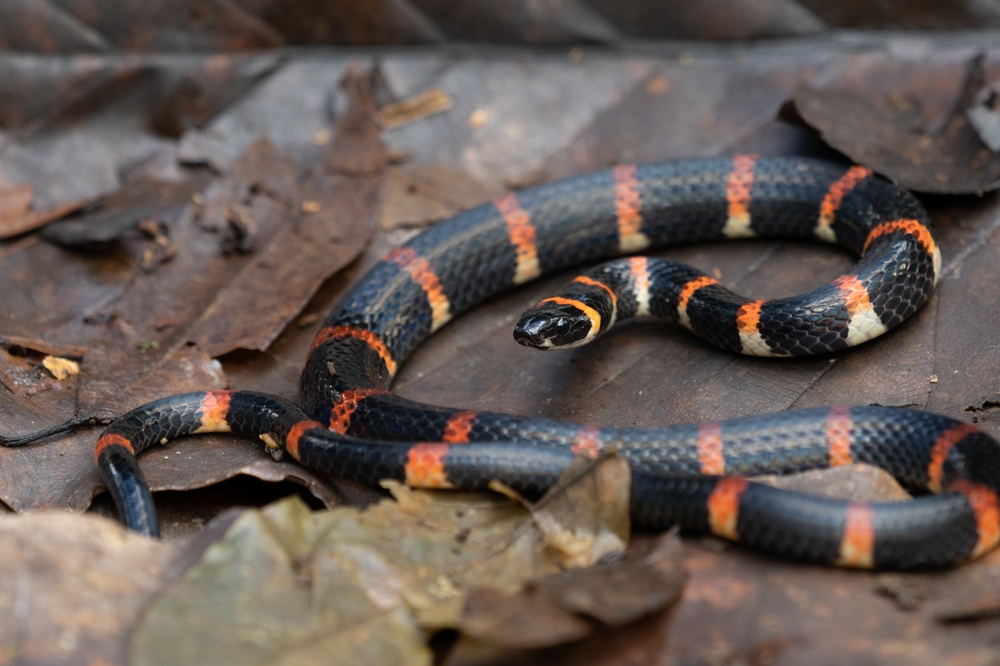
The Eastern Coral Snake, with its vibrant red, yellow, and black bands, is found in the southeastern United States. Its neurotoxic venom affects the nervous system, leading to paralysis. Despite its deadly potential, it’s a reclusive snake, biting only when provoked. It feeds on lizards and smaller snakes, using its small but effective fangs to deliver venom. This snake’s warning colors and elusive nature are its primary defenses, often relying on camouflage and stealth to capture its prey in wooded areas.
15. Tiger Snake: The Coastal Conqueror
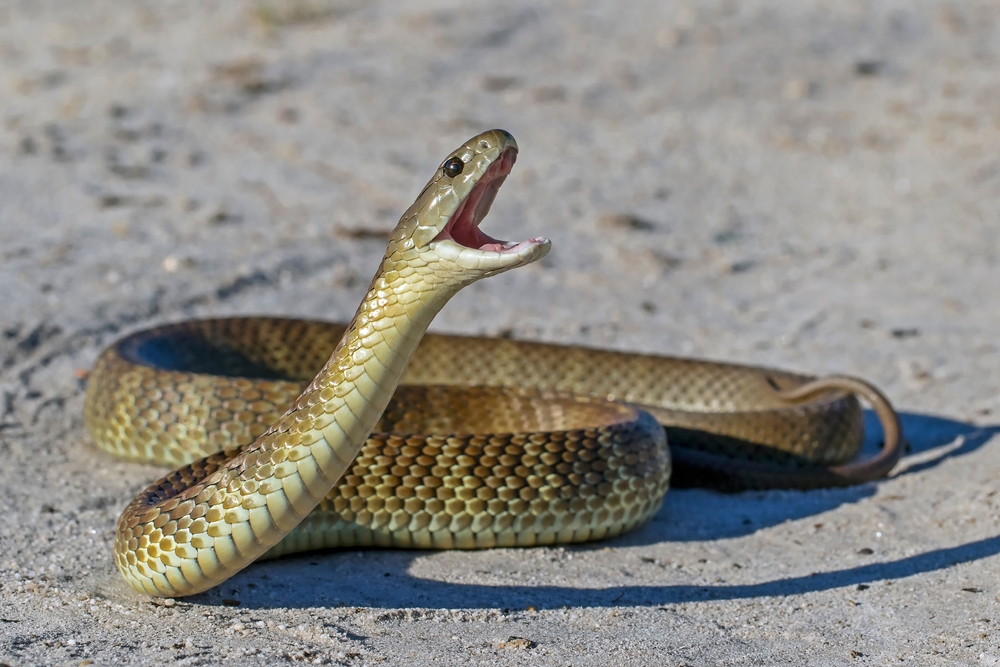
The Tiger Snake, native to southern Australia, is known for its banded pattern and potent venom. Its venom contains neurotoxins, coagulants, and myotoxins, making it highly effective against its prey, which includes frogs, birds, and small mammals. It’s an excellent swimmer, often found near water bodies where it hunts. The Tiger Snake’s adaptability to different environments and its powerful venom make it a top predator in its range. Its ability to strike quickly and incapacitate its prey highlights its dominance in coastal ecosystems.
